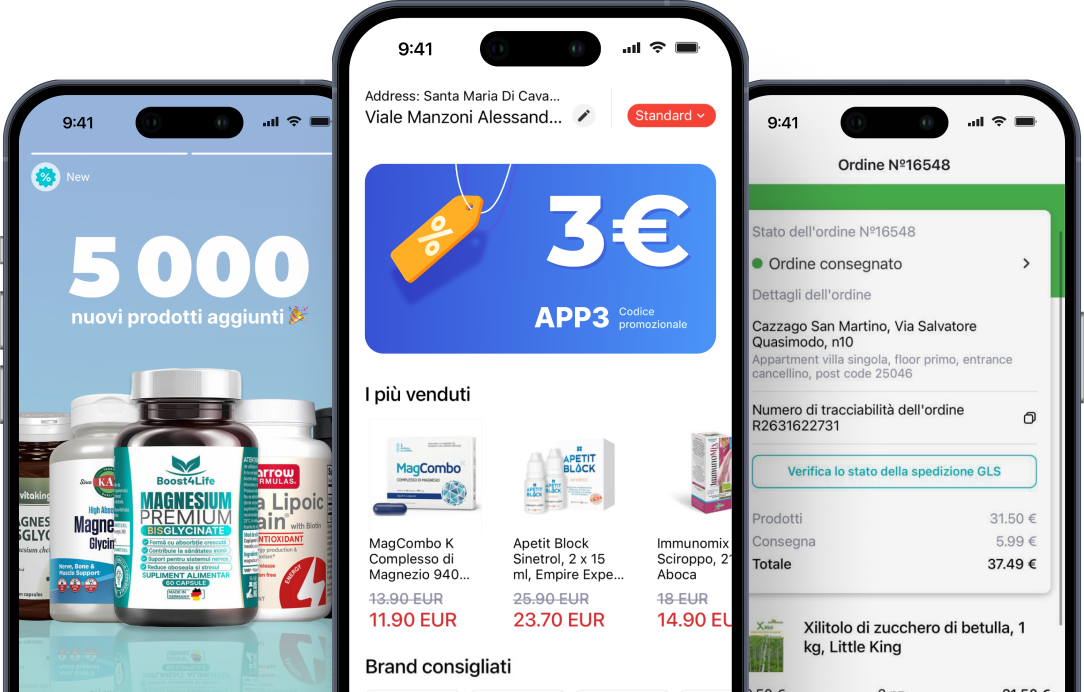

Description
Quick test Vitamin D, 1 piece, Advent Life [3800502177098]
Properties:
Quick test for Vitamin D deficiency.
For self-testing for in vitro diagnostic purposes.
The Vitamin D Rapid Test Kit is a rapid chromatographic immunoassay for the semi-quantitative detection of 25-hydroxyvitamin D (25 (OH) D) in whole blood obtained by finger prick.
This test provides a preliminary diagnostic result and can be used to screen for vitamin D deficiency.
Vitamin D refers to a group of fat-soluble secosteroids responsible for increasing the intestinal absorption of calcium, iron, magnesium, phosphate and zinc. In humans, the most important compounds in this group are vitamin D3 and vitamin D2. Vitamin D3 is produced naturally in human skin by exposure to ultraviolet light, and vitamin D2 is obtained mainly from food. Vitamin D is transported to the liver, where it is metabolized into 25-hydroxy vitamin D. In medicine, a blood test for 25-hydroxy vitamin D is used to determine the concentration of vitamin D in the body. The blood concentration of 25-hydroxy vitamin D (including D2 and D3) is considered the best indicator of vitamin D status. Vitamin D deficiency is now recognized as a global epidemic. Virtually every cell in our body has receptors for vitamin D, which means they all need an "Enough" level of vitamin D to function properly. The health risks associated with vitamin D deficiency are much more serious than previously thought. Vitamin D deficiency has been associated with various serious diseases: osteoporosis, osteomalacia, multiple sclerosis, cardiovascular disease, pregnancy complications, diabetes, depression, strokes, autoimmune diseases, influenza, various types of cancer, infectious diseases, Alzheimer's, obesity and higher mortality etc.
ADDITIONAL INFORMATION
1. How does the vitamin D test work?
In medicine, 25-hydroxy vitamin D is the main storage form of vitamin D in the body. Therefore, the general status of vitamin D can be determined by detecting the content of 25-hydroxy vitamin D. A level of 25-hydroxy vitamin D less than 30 ng/mL, in case of a positive result, indicates a deficiency or insufficiency of vitamin D. In these cases, vitamin D supplements may be recommended.
2. When should the test be used?
The clinical application of 25-hydroxy vitamin D is mainly for the diagnosis, treatment and monitoring of rickets (children), osteomalacia, postmenopausal osteoporosis and renal osteopathy. Vitamin D deficiency is also associated with many other diseases, including cancer, cardiovascular disease, autoimmune disease, diabetes, and depression. Monitor your vitamin D levels to determine if you need to take vitamin D supplements. The quick vitamin D test can be used at any time of the day.
3. Could the result be incorrect?
Results are accurate as long as the instructions are followed carefully. However, the result may be incorrect if the Vitamin D Rapid Test cassette gets wet before the test is performed, or if the amount of blood dispensed into the sample hole is not sufficient, or if the number of drops of dilution solution is less than 2 or more of 3. The pipette provided in the box allows you to ensure that the volume of blood collected is correct. Furthermore, because of the immunological principles involved, there is a chance of false positives in rare cases. A doctor's consultation is always recommended for such tests based on immunological principles.
4. How to interpret the test if the color and intensity of the lines are different?
Please refer to the illustration and compare the intensity of the T line with the color card provided with the kit.
5. If I read the result after 20 minutes, will the result be reliable?
Not. The result should be read 10 minutes after adding the dilution solution. The result is not reliable after 20 minutes.
How to use:
1. Wash your hands with soap and rinse with clean warm water.
2. Bring bag to room temperature before opening. 3. Open the bag, remove the test cassette and place it on a clean, flat surface. Perform the test within one hour and best results will be obtained if the test is performed immediately after opening the sealed bag. Remove the pipette, diluent bottle, lancet, and alcohol swab and place them next to the test box.
3. Carefully remove and discard the released lancet cap.
4. Use the provided alcohol swab to clean the tip of the middle or ring finger as the puncture site. Allow to air dry.
5. Press the lancet, on the side from which the cover was extracted; the tip retracts automatically and safely after use. Massage the hand without touching the puncture site, massaging the hand towards the tip of the middle or ring finger to be punctured.
6. Holding your hand down, massage the end that was stung to get a drop of blood.
7. Without pressing the pipette bulb, place it in contact with the blood. Blood migrates into the pipette by capillarity to the line indicated on the dropper. If the blood does not reach the indicated line, you can massage your finger again to get more blood. Avoid air bubbles.
8. Release the collected blood into the sample port (S) of the cassette by depressing the pipette bulb.
9. Wait for the blood to be fully dispensed into the sample port. Unscrew the cap of the diluent bottle and add 2 drops of the substance to the hole (B) of the cassette and start a timer.
10. Wait for the colored line(s) to appear. Read the results after 10 minutes. Compare the intensity of the T line with the color card provided with the kit to get your blood vitamin D level. Do not interpret the result after 20 minutes.
Presentation:
1 piece
Features
| Product code | 370046 |
| Category | Tests for general use, Tests |
Reviews
There are no reviews for this product.






























































 Description
Description 





